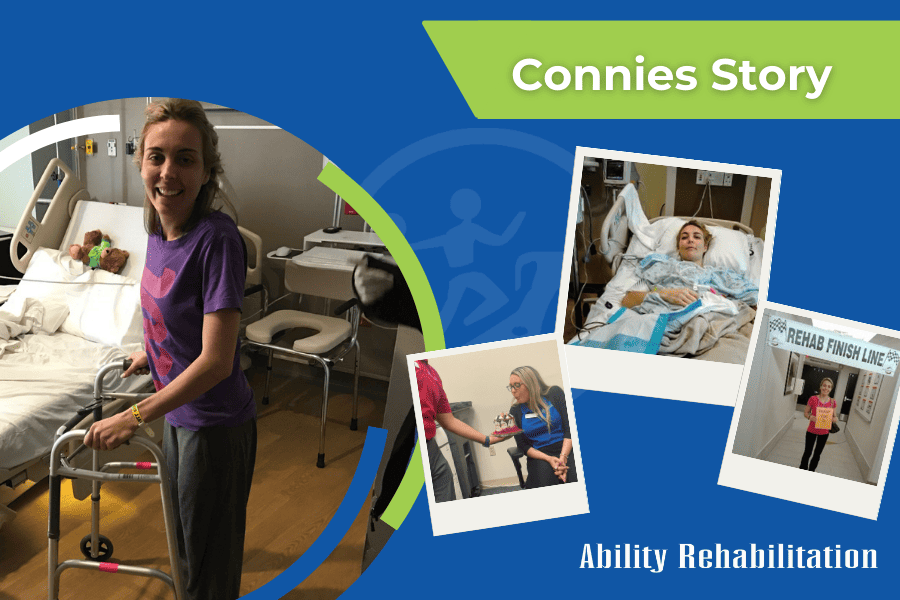4 Effective Exercises and Stretches to Relieve Shoulder Pain
 We ask a lot from our shoulders, including having the strength and flexibility to reach, lift, hold, carry, press and pull. With all this activity, it’s unsurprising that we experience some degree of shoulder discomfort in our life.
We ask a lot from our shoulders, including having the strength and flexibility to reach, lift, hold, carry, press and pull. With all this activity, it’s unsurprising that we experience some degree of shoulder discomfort in our life.
If shoulder pain is left untreated, it can become a chronic problem that can inhibit everyday activities like carrying groceries, getting dressed or combing your hair. Fortunately, shoulder injuries are highly treatable if caught early.
Why the Shoulder Is Prone to Injury
Contrary to what many believe, the shoulder is more than just a single joint. The shoulder is actually comprised of several joints that combine with tendon and muscles to provide the rotation and stability we’re all familiar with. The shoulder complex can involve many other body parts, including the:
- Neck
- Ribs
- Scapula (shoulder blade)
- Clavicle
- Thoracic region of the spine
- Humerus
Because there are so many parts that work together for the shoulder to function properly, it also means that each of these parts could become damaged or injured and lead to pain. Let’s take a look at the most common causes of shoulder pain.
What Causes Shoulder Pain?
Some sources of shoulder pain constitute a medical emergency and require immediate attention followed by professional rehabilitation led by a physical therapist, such as dislocation, separation or fracture.
Some of the common causes of shoulder pain are arthritis, impingement, instability and overuse. Other common causes of shoulder pain may include:
- Rotator cuff tendonitis. The rotator cuff is a group of four muscles tasked with supporting and moving the shoulder. The tendons attach to the arm bone in an area underneath the bony prominence of the shoulder blade. Rotator cuff tendonitis can become pinched under this bone, which causes inflammation and soreness. Age is notably the biggest contributor to rotator cuff disease.
- Biceps tendonitis. The biceps tendon attaches your biceps muscle in the upper arm to the front of the shoulder. This tendon can become pinched due to the bony anatomy of the shoulder blade or by ligaments that attach to the collarbone and shoulder blade.
- Bursitis. Shoulder bursitis occurs when the bursa, a fluid-filled sac that enables body structures to glide smoothly over one another, becomes pinched. There is a bursa between the humerus bone and the shoulder blade.
- Frozen shoulder. Also called adhesive capsulitis, frozen shoulder is condition where the shoulder becomes painful and gradually loses motion due to lack of use, a worsening rheumatic disease, a lack of fluid to help the shoulder move or bands of tissue that grow in the joint and restrict motion.
Exercises and Stretches to Relieve Shoulder Pain
If your shoulder pain is the result of a trauma, or if the pain has persisted beyond two to three weeks, you may want to seek medical attention. Certain causes of shoulder pain, such as rotator cuff injuries and frozen shoulder, get worse over time and may require surgical intervention if more conservative treatments are unsuccessful.
If you don’t feel your pain warrants a visit to the doctor, you should consider enlisting a physical therapist to help. You don’t need a referral to do this. After an initial evaluation and assessment of the pain, your physical therapist may use a goniometer to measure your range of motion and strength while monitoring the quality of the shoulder motion. Your physical therapist will then likely recommend stretches and exercises to help control inflammation and relieve pain.
Some of the most effective exercises and stretches to relieve shoulder pain at home are the following.
Pendulum
To do the pendulum exercise, start by leaning over and supporting your non-injured arm with a table or chair. Allow the sore arm to dangle straight down and then draw circles in the air. The circles should start out small but gradually grow, and you should also reverse direction periodically. Repeat this exercise 5 to 10 times throughout the day.
Arm Across the Chest
To do this stretch, hold your right hand out in front of your body, keeping it near the waist. Then reach the left hand behind the elbow while pulling the right arm to the left and across the chest. Lower the arm until the pain lessens. Hold in this position for 30 to 50 seconds and then release. Repeat this stretch 3 to 5 times.
Neck Release
While sitting up straight, slowly tilt the chin toward the chest until the stretch can be felt in the back of the neck. Then lean your head toward the left to stretch the right shoulder, or conversely lean to the right to stretch the left shoulder. The stretch should be held for a minute on each side. Try breathing deeply to help relax and maximize the stretch.
Chest Expansion
For this exercise you’ll need an exercise band, rope, strap or a tie. Take one of these items and hold it behind your back while grasping with both hands. Move the shoulder blades toward one another and gently lift your chin toward the ceiling. Hold for 10 to 15 seconds while breathing deeply. Do this 3 to 5 times.



